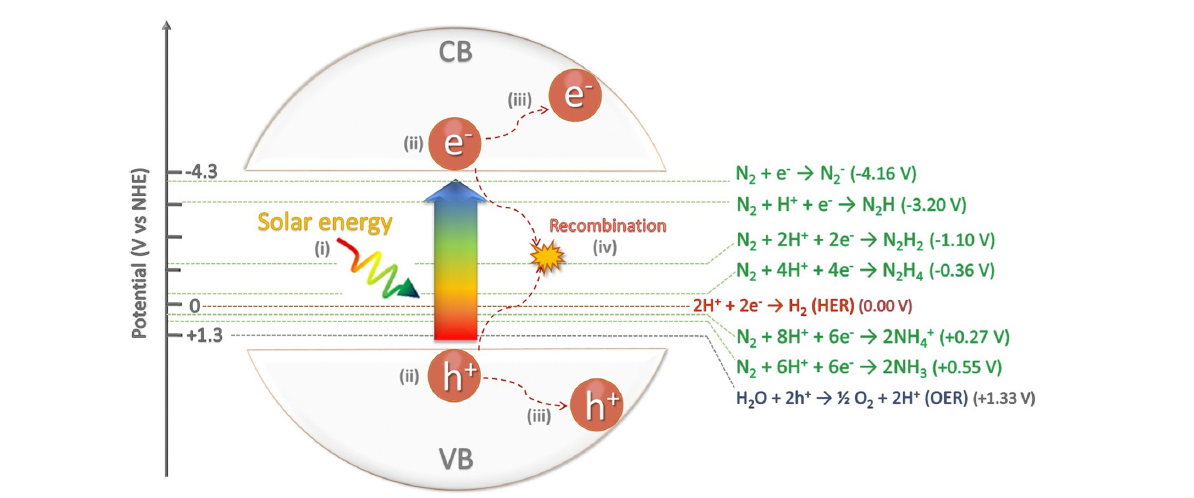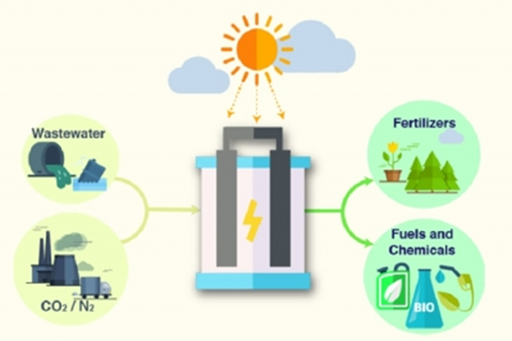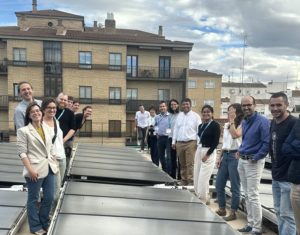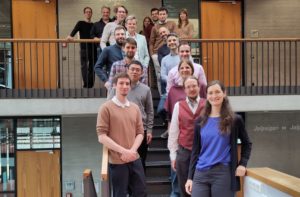Accelerating solar fuel discovery guided by AI-driven autonomous lab
May 19, 2025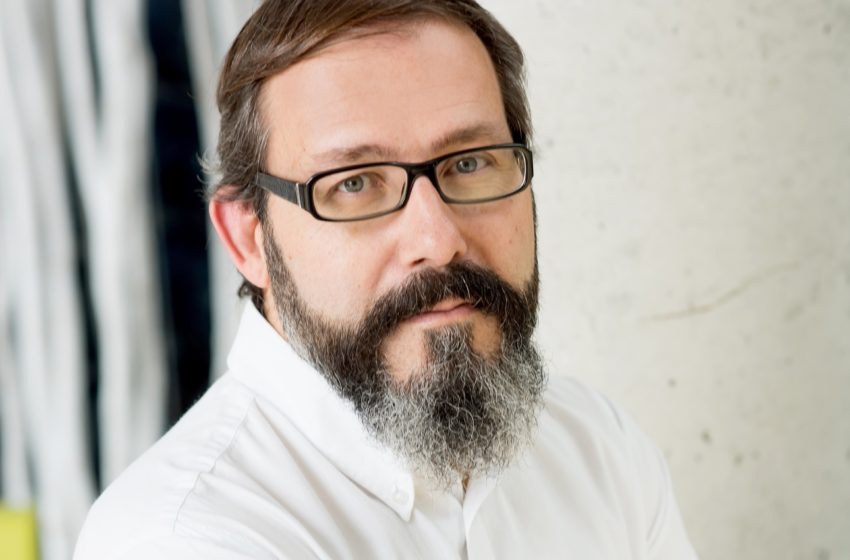
A new research group within the IEA Solar Heating and Cooling Programme is focusing on the development of solar-driven processes and reactors, for example to produce solar hydrogen or convert CO2 and N2 to ammonia. The group is called Task 72 – Solar photo reactors for the generation of fuels and chemicals. Víctor de la Peña O’Shea is one of the leading researchers in this field and one of four leading Heads of Task 72. He has chaired the Photoactivated Process Group at the Spanish Research institute IMDEA Energy since 2015. We spoke with him about the objectives of the new Task 72 and results from relevant research projects of his group.
Photo: IMDEA
One of the objectives of Task 72 is the development of photoactive materials based on non-critical elements. What is the role of these materials?
De la Peña O’Shea: Photoactive materials are at the heart of solar fuel production. They are special materials that can absorb sunlight and convert its energy into chemical reactions — the key step needed to produce fuels like hydrogen, methanol, syngas, methane or ammonia, among others. It is essential to design the photoactive material according to the target product. The chemical processes in reactors span multiple time scales – from femtoseconds to seconds. So it is crucial to develop ground-breaking strategies which combine innovative solar reactors with photoactive materials that ensure efficient light harvesting, optimal charge transfer, and stable catalysts to enhance the productivity and improve the selectivity to the targeted products.
What are the most promising photoactive materials that can be used for fuel production?
De la Peña O’Shea: It is difficult to define a single promising material for such complex reactions. However, a particularly promising strategy is the development of organic/inorganic heterojunctions, especially those based on non-critical elements. These systems are composed of more than one photoactive material. Such hybrid systems can offer a balance between tunable optoelectronic properties and sustainability in catalysing chemical reactions, making them ideal candidates for solar fuel production.
“Ideally, photons must play an active role in driving both the thermal and photochemical reactions”
Another objective of Task 72 is to develop design strategies for photothermal reactions. What is the challenge here?
De la Peña O’Shea: Photothermal processes use the sunlight to generate heat, which then breaks down organic material like biomass and oil or even waste plastics into simpler, useful products like hydrogen, syngas or liquid fuels. Hence, photothermal systems allow us to take advantage of both light and thermal energy inputs, enabling reactions that would otherwise be unfeasible. However, it is essential to adopt a critical perspective. Photothermal catalysis should not be understood merely as the simultaneous application of heat and light. Ideally, photons must play an active role in driving both the thermal and photochemical reactions, rather than serving solely as an auxiliary energy input.
Which new photothermal reactions are you working on with your research group at IMDEA?
De la Peña O’Shea: We are currently investigating photothermal catalysis for CO₂ hydrogenation. The idea here is to react CO2 – which is very stable and not very useful on its own – with hydrogen gas to create new molecules which are more useful products like methanol or ammonia.
Our team is also actively engaged in developing innovative, solar-driven nitrogen fixation technologies to produce fertilizers (see figure 1). This research focuses on the direct conversion of atmospheric nitrogen (N₂) or Nitrogen oxides (NOx) into ammonia (NH₃) under mild conditions. Ammonia synthesized through solar processes holds promise not only as an energy carrier, especially in the context of hydrogen storage and shipping, but also as a critical input for the fertilizer industry, which is essential for maintaining global food security.
Figure 1: Schematic energy diagram of light-driven nitrogen fixation for green ammonia production. The scheme depicts (i) the absorption of light by the semiconductor, (ii) the subsequent photogeneration of electron/hole pairs, (iii) the migration of the carriers to the surface of the semiconductor, (iv) recombination of carriers. Source: IMDEA
Within the EU project HySolChem you have developed a hybrid reactor for solar CO2 and nitrogen (N2) conversion. What does the prototype of the hybrid reactor look like and what are the key findings from its initial operation?
De la Peña O’Shea: Within HySolChem we have developed a hybrid solar reactor that simultaneously reduces CO₂ and/or N₂ or NOx to produce valuable fuels and chemicals while treating wastewater contaminants, including microplastics and organic pollutants. This innovative reactor integrates photocathodes for CO₂/N₂ reduction, anodes for pollutant oxidation and ion-exchange membranes into a solar-powered flow system (see figure 2).
The prototype of the reactor has been scaled to technology readiness level 5 and is undergoing evaluation in real wastewater treatment plant environments. Key findings from the initial operations include the successful development of hybrid organic/inorganic photocathodes with high efficiency and stability, as well as anodes composed based on earth-abundant elements that effectively oxidize microplastics and organic pollutants. The reactor has a flexible configuration, allowing it to work both with and without light.
Figure 2: Scheme of the multifunctional reactor developed within the EU project HySolChem. It includes a new photo cathode (dark grey block on the right) based on organic/inorganic hybrid semiconductors designed to improve light absorption and reduce charge recombination. There is also an advanced dark anode designed with a unique architecture to boost the oxidation of organic pollutants and microplastics in waste water (light grey block on the left). These are coupled with innovative ion exchange membranes. Graphic: HySolChem/ IMDEA
Another topic that you will be working on in Task 72 is the development of selective catalysts for different target reactions. Which suitable catalysts have your research group examined?
De la Peña O’Shea: Identifying the best catalyst depends largely on the desired product and the specific chemical reaction employed. For example, in (photo)electrochemical CO₂ reduction reactions, copper is one of the most effective candidates for producing C₂+ compounds. This means carbon chains with more than two carbon atoms. In contrast, platinum remains the most efficient catalyst for hydrogen production.
If we are looking for higher activity and selectivity towards longer hydrocarbon chains, transition metals such as cobalt and iron are more suitable. These materials offer promising activity while being more abundant and less expensive than noble metals.
You mention artificial intelligence in the Task 72 work plan. How do you aim at using AI?
De la Peña O’Shea: Given the inherent complexity of these catalytic systems, we believe that artificial intelligence and automation can play a key role in accelerating the discovery of new, more efficient, selective and stable photoactive and catalytic materials. Our group is actively developing AI-driven autonomous laboratories designed specifically for accelerating discovery in catalysis. In this context, an autonomous laboratory is an experimental platform where artificial intelligence not only analyzes data from previous experiments but also autonomously proposes, prioritizes, and executes new experiments with minimal human supervision.
In our system, AI models are trained to detect patterns in catalyst performance and use predictive algorithms to identify the next most informative set of reaction conditions or material compositions. This setup allows for continuous iteration and learning, with the AI functioning as a “scientific planner” that refines its hypotheses and adapts its strategy based on experimental outcomes, enabling rapid, intelligent exploration of complex catalytic landscapes.
Website of organizations and projects mentioned in this news article
IEA SHC Programme: https://www.iea-shc.org/
Task 72 Solar photo reactors for the generation of fuels and chemicals: https://task72.iea-shc.org/
IMDEA Energy: https://energia.imdea.org/en/
HySolChem project: https://www.hysolchem.eu/
